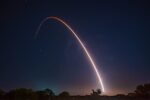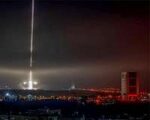At DSEI 2025 in London, Kia Corporation unveiled a militarized variant of its upcoming Tasman pickup truck platform. Designed to serve as a flexible tactical mobility solution for armed forces and security agencies, the prototype integrates military-grade blackout systems and modular design features aimed at bridging civilian automotive reliability with defense-specific requirements.
Military Adaptation of the Kia Tasman Platform
The Kia Tasman is originally developed as a mid-size pickup truck for global commercial markets. However, the version presented at DSEI 2025 has been adapted specifically for military applications. The militarized variant retains the robust ladder-frame chassis and diesel powertrain expected in the civilian model but incorporates mission-specific enhancements such as:
- Blackout lighting system compliant with NATO standards for night operations
- Reinforced suspension and underbody protection for off-road durability
- Modular rear tray design allowing role-specific configurations (troop transport, comms shelter, weapon mount)
- EMI shielding provisions to support C4ISR or EW payloads
This approach mirrors recent trends in leveraging commercial off-the-shelf (COTS) platforms to reduce procurement costs while accelerating fielding timelines.
Key Specifications and Performance Features
While Kia has not yet released final production specifications for either the civilian or military versions of the Tasman (expected to enter commercial production in late 2025), preliminary details suggest a focus on ruggedness and interoperability. Key anticipated features include:
- Diesel engine with estimated output of ~150–200 kW (200–270 hp)
- Selectable four-wheel drive system with low-range gearing
- Towing capacity exceeding 3 tonnes
- Payload capacity of ~1 tonne in base configuration
The military prototype also includes upgraded all-terrain tires, jerrycan mounts, blackout switchgear integrated into the dashboard cluster, and optional mounts for communication antennas or light remote weapon stations (RWS).
Tactical Applications and Modularity Potential
Kia’s display emphasized the vehicle’s flexibility across multiple mission profiles. The flatbed can be reconfigured rapidly using standardized mounting points to support roles such as:
- Light troop transport (up to six dismounts)
- C2/C4ISR node with integrated radios and satcom terminals
- Weapon carrier platform (e.g., ATGM launcher or mortar system)
- Medevac stretcher module with fold-down canopy
This modularity aligns with NATO trends toward multi-role platforms that can be adapted in-theater without requiring depot-level changes. The vehicle’s dimensions (~5.4 m long) allow it to be air-transportable by C-130-class aircraft or CH-47 helicopters when stripped down.
Blackout Control System: Enhancing Survivability in Contested Environments
A notable feature highlighted at DSEI was the integrated blackout control system. This includes infrared-reduced lighting elements compliant with MIL-STD visibility thresholds under night vision devices (NVDs). All exterior lights—including brake lights—can be disabled via a single switch or automatically triggered based on threat detection inputs from onboard sensors.
This capability is increasingly critical in modern conflict zones where visual signature management is essential against UAV-based ISR threats. The inclusion of this feature suggests Kia is aiming beyond logistics roles toward frontline utility applications.
Kia’s Defense Ambitions and Market Positioning
Kia’s entry into the defense vehicle market follows broader moves by South Korean OEMs—such as Hyundai Rotem and Hanwha Defense—to expand their presence globally. While Kia previously supported domestic police fleets and logistics units through its Bongo-based vehicles, this marks its first known attempt at offering a purpose-built defense platform internationally.
The company has not disclosed any confirmed customers but indicated interest from several Southeast Asian countries seeking cost-effective light tactical vehicles that do not require full MRAP-level protection but offer high mobility and reliability. Given its established manufacturing base across Asia-Pacific regions—including Vietnam and India—Kia could potentially offer localized assembly options under offset agreements.
Outlook: A Competitor in Light Tactical Vehicle Segment?
If brought to production with competitive pricing and validated performance metrics under NATO STANAG testing regimes (e.g., STANAG Level I mine/ballistic resistance), the militarized Kia Tasman could compete against platforms like:
- Toyota Land Cruiser-based conversion kits (e.g., Jankel Fox)
- Nissan Navara/Isuzu D-Max military variants used by ASEAN forces
- MILDEF Rentaka from Malaysia or Thales Hawkei LTV (for higher-end users)
The key differentiator may lie in how well Kia supports integration of digital backbone systems—such as BMS terminals or EW payloads—and whether it can offer lifecycle support packages tailored to expeditionary forces.
Conclusion: Civilian-Military Fusion Trend Continues at DSEI
The unveiling of Kia’s militarized Tasman underscores an ongoing trend where automotive OEMs leverage commercial platforms as springboards into defense markets. While questions remain about survivability standards and operational validation, the vehicle offers an intriguing option for nations seeking affordable tactical mobility without sacrificing modularity or interoperability.
DSEI continues to serve as a proving ground not only for high-end systems but also for dual-use innovations that blur traditional lines between civilian engineering excellence and battlefield requirements.
Sources
- World Defence News – “DSEI 2025: Kia Tasman versatile vehicle platform” (Sep 2025)
- Kia Global Newsroom – Corporate Announcements & Model Previews (Accessed Sep 2025)
- Army Recognition – Coverage of Light Tactical Vehicles & OEM Exhibits at DSEI (Sep 2025)
- Janes Defence Weekly – Analysis on Light Utility Vehicle Trends & STANAG Compliance Requirements (Sep–Oct 2024)
- Defense News – “South Korean OEM Expansion into ASEAN Defense Markets” (Aug–Sep 2024)









